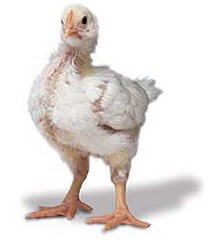Biosecurity
Basic management practices such as limited controlled site access, separate footwear and equipment for each site/house, and footbaths at the entrance to sites/houses all minimise the risk of introducing the virus. Due to the resilience of IBDV an infection on a site easily leads to an endemic situation. Hygienic measures are aimed at minimising infection pressure. Priority is to remove contaminated litter from site as soon as possible. A structured approach is required to prevent back tracking of the virus.
- Dry clean: removal and disposal of all organic material from the site. (In case of earthen floors this should include removing the top 4-5 cm of soil.)
- Wet clean: cleaning poultry house using water at high pressure (35 – 55 Bar) to ensure removal of all organic material. It is advisable to add detergents to assist cleaning process.
- Disinfection: application of suitable disinfectant to reduce infectivity of any remaining virus particles. Applying disinfectants at the correct concentration with a suitable contact time is critical. Generally products containing formaldehyde, iodophores, chlorine-releasing agents or quaternary ammonium compounds are suitable.
The downtime between successive broiler flocks must be maximised. (A minimum of 10 days is recommended between successive flocks.) Control of IBDV on multi-age sites is extremely challenging and requires strict control of the movement of personnel and equipment between houses.
Peer Reviewed by Dr J J (Sjaak) de Wit and William Baxendale.

A structured cleaning approach:
- Dry clean
- Wet clean
- Disinfection
